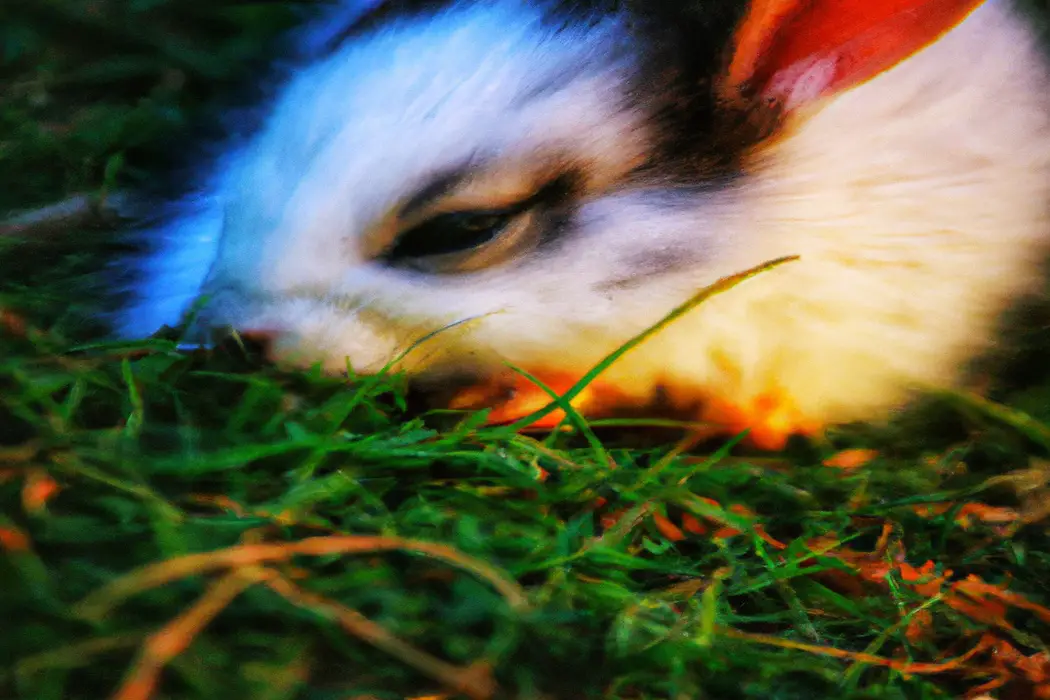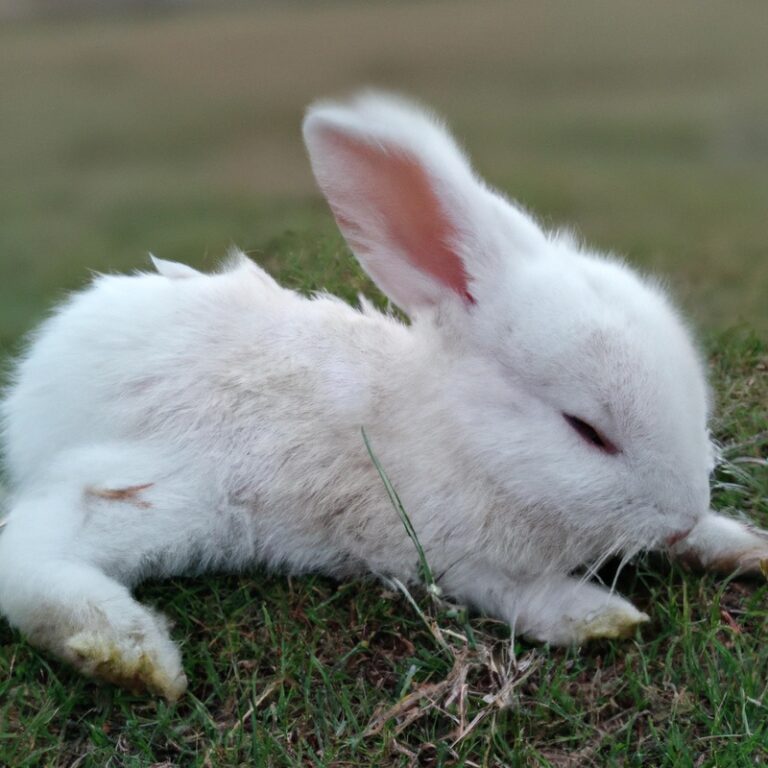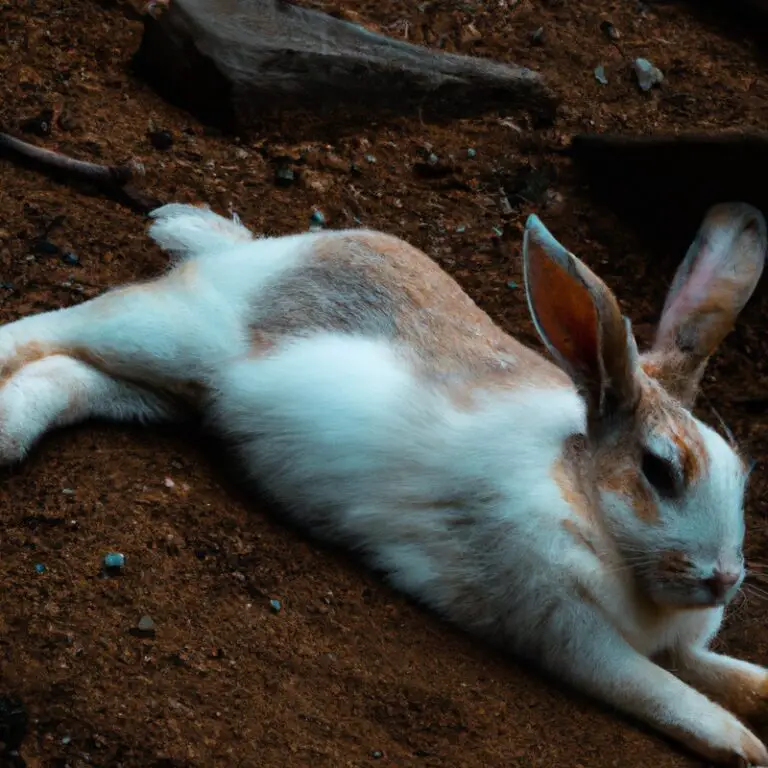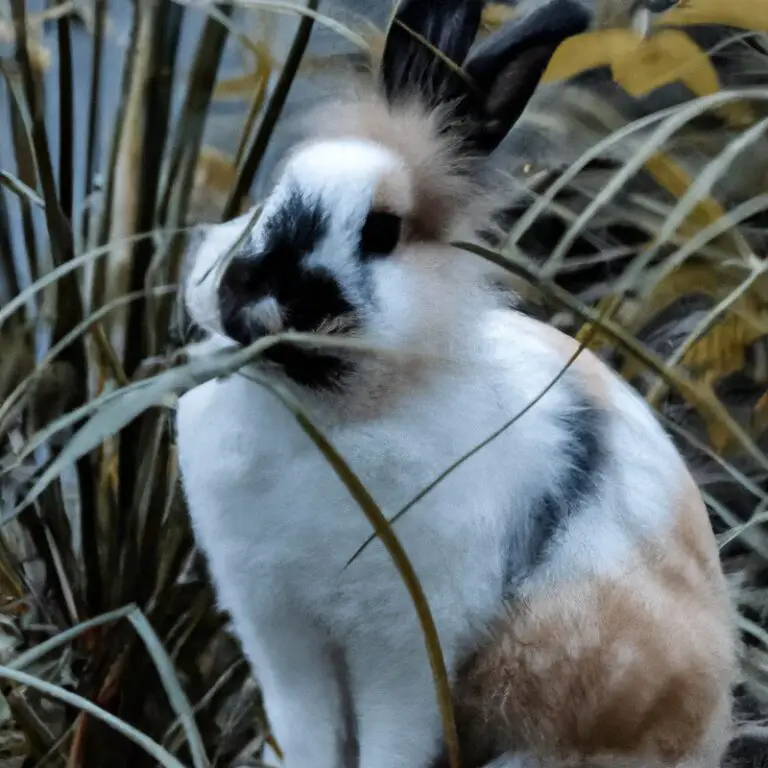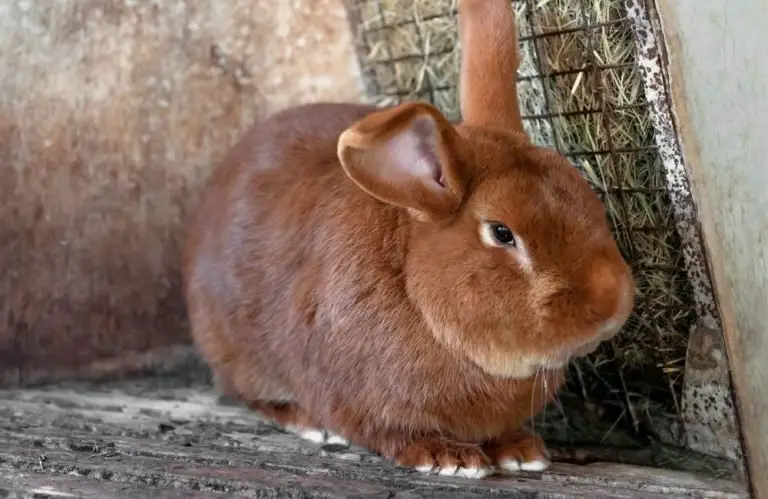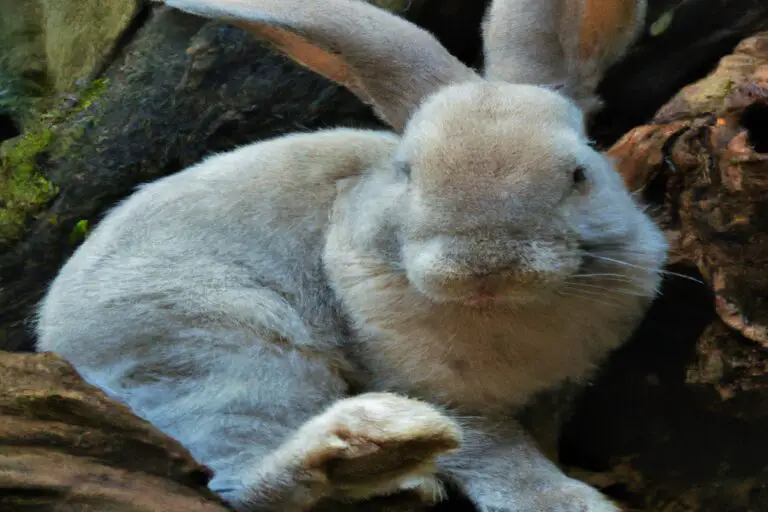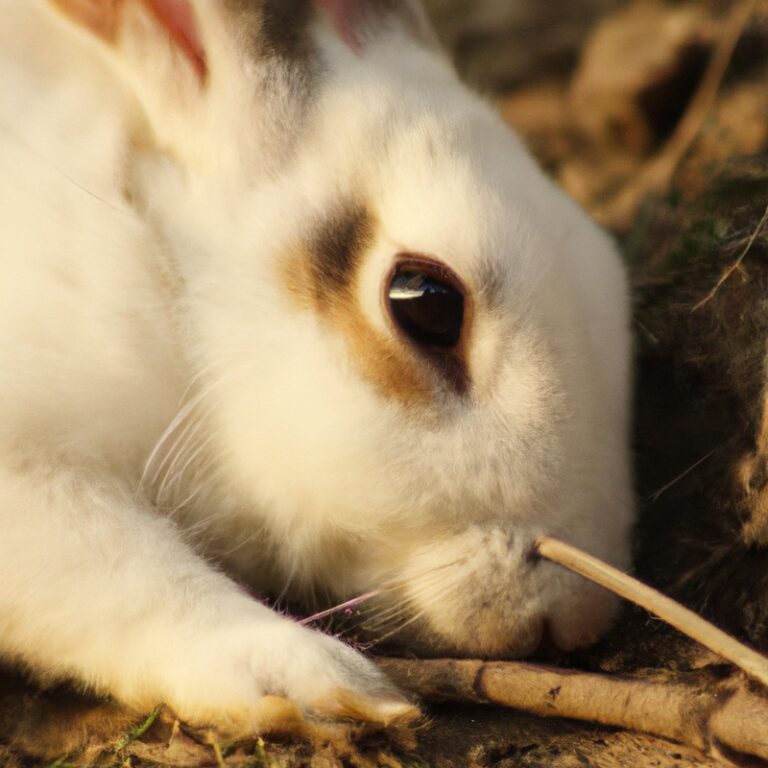a Symbiotic Relationship Between a Rabbit And… a Hare. The Perfect Fur-Mates!
Key Takeaways:
- Rabbits can form symbiotic relationships with various animals.
- These relationships can benefit both the rabbit and its symbiotic partner.
- The symbiotic relationship between a rabbit and its partner can provide protection and companionship.
- The specific type of symbiotic relationship between a rabbit and its partner can vary depending on the species of the partner animal.
Are you curious about the extraordinary bond that can form between a rabbit and another pet?
Look no further! In this article, we’ll explore the fascinating world of symbiotic relationships between rabbits and different animals.
Whether it’s with a cat, dog, or even children, these partnerships can be truly remarkable.
As an expert in the field, I will share insights on the benefits, challenges, and how to create a harmonious living environment for these adorable duos.
Get ready to discover the magic that unfolds when rabbits and other animals come together in perfect harmony!
a rabbit and a bunny.| Rabbit | Bunny |
| Eat grass and hay | Eat pellets and fresh vegetables |
| Nocturnal creature | Diurnal creature |
| Lives in burrows | Lives in nests |
A Symbiotic Relationship Between a Rabbit and a Cat
A rabbit and a cat can form a symbiotic relationship based on mutual companionship and shared living space.
The Benefits of Having a Rabbit and Cat Together
Having a rabbit and a cat together can be beneficial in many ways.
- Companionship: Both animals can develop a strong bond and provide each other with companionship and comfort.
- Mental Stimulation: Interacting with each other can provide mental stimulation for both the rabbit and the cat, helping to prevent boredom and loneliness.
- Exercise: Cats and rabbits both need exercise, and having a playmate encourages them to stay active and engaged.
- Socialization: Having both a rabbit and a cat can help with socialization skills for both animals, as they learn to interact with different species.
- Stress Relief: The presence of another animal can help reduce stress for both the rabbit and the cat, creating a calmer and more relaxed environment.
It’s important to introduce them gradually and provide a safe and supervised environment for them to interact.
Regular vet check-ups and proper care are also crucial for their well-being.
Remember, each animal is unique, so it’s best to monitor their behavior and provide individual attention when needed.
Creating a Harmonious Living Environment for Rabbits and Cats
Creating a harmonious living environment for rabbits and cats is all about providing space and safety for both pets.
- Introduce them slowly: Allow controlled interactions and limited exposure initially to prevent any stress or aggression.
- Provide separate spaces: Give each pet their own designated area with hiding spots, litter boxes, and cozy beds to retreat to.
- Ensure supervision: Supervise their interactions until you are confident they can coexist peacefully.
- Maintain routines: Stick to consistent feeding and playtime schedules to help establish a sense of security for both pets.
- Keep things tidy: Regularly clean litter boxes and remove any potential hazards to ensure a safe environment for both pets.
Remember, creating a harmonious living environment takes time and patience, but with the right approach, rabbits and cats can become great companions.
Ensuring Proper Nutrition for Both Rabbits and Cats
Proper nutrition is essential for the health and well-being of both rabbits and cats. For rabbits, a diet high in hay, fresh vegetables, and a small amount of pellets is best.
Cats, on the other hand, require a balanced diet that includes high-quality protein from meat sources.
It’s important to avoid feeding them the same food, as rabbits have different dietary requirements and some ingredients can be harmful to them. Consult with a veterinarian for specific nutritional guidelines to ensure both your rabbit and cat are receiving the proper nutrients they need.
Promoting Bonding and Playtime between Rabbits and Cats
To promote bonding and playtime between rabbits and cats, it’s important to introduce them gradually and under supervision.
Start by creating a safe and neutral space for them to interact, such as a playpen or gated area.
Allow them to explore and get used to each other’s presence.
Provide separate hiding spots and resources to avoid any conflict.
Encourage positive interactions by offering treats and praise when they show curiosity or playfulness.
Supervision is key to ensure their safety and prevent any aggressive behavior.
With time and patience, they may develop a symbiotic relationship.
The Importance of Regular Veterinary Check-ups for Rabbits and Cats
Regular veterinary check-ups are important for both rabbits and cats.
These check-ups allow the vet to monitor their overall health and catch any potential issues early on.
During the check-up, the vet will examine the animal, check their vital signs, and address any concerns or questions you may have.
They may also administer necessary vaccinations and recommend preventative measures.
Regular check-ups ensure that your furry friend stays healthy and happy, and can help prevent more serious health problems in the future.
Addressing Common Challenges in the Rabbit and Cat Symbiotic Relationship
In the rabbit and cat symbiotic relationship, there are a few common challenges that may arise. One challenge is the potential for predatory behavior from the cat towards the rabbit.
To address this, it is important to provide proper supervision and separation when necessary.
Another challenge is litter box sharing, as cats may try to dominate the space. Providing separate litter boxes for each pet can help alleviate this issue.
Additionally, ensuring that both animals have their own designated spaces and toys can help prevent territorial conflicts.
Regular veterinary check-ups for both pets are also essential to maintain their overall health and well-being.
A Symbiotic Relationship Between a Rabbit and a Dog
Rabbits and dogs can form a symbiotic relationship, benefiting each other in various ways.
Introducing Rabbits and Dogs to Each Other
Introducing rabbits and dogs to each other can be a delicate process. It is important to start by allowing them to get familiar with each other’s scents before any direct interaction.
Gradually introduce them in a neutral space and closely monitor their behavior.
Provide plenty of positive reinforcement and rewards for good behavior. Keep interactions short and gradually increase their duration as they become more comfortable.
Remember to always prioritize the safety and well-being of both animals throughout the introduction process.
The Advantages of Having a Rabbit and Dog as Companions
Having a rabbit and dog as companions can bring several advantages. Firstly, they can provide each other with company and reduce feelings of loneliness.
Both animals are social creatures and often enjoy being around others.
Secondly, their different behaviors and traits can complement one another. Dogs are generally protective and can keep the rabbit safe, while rabbits can provide entertainment with their playful antics.
Lastly, caring for multiple pets can teach responsibility and empathy, especially for children.
Overall, the unique bond between a rabbit and dog can bring joy and enrichment to both pets and their human owners.
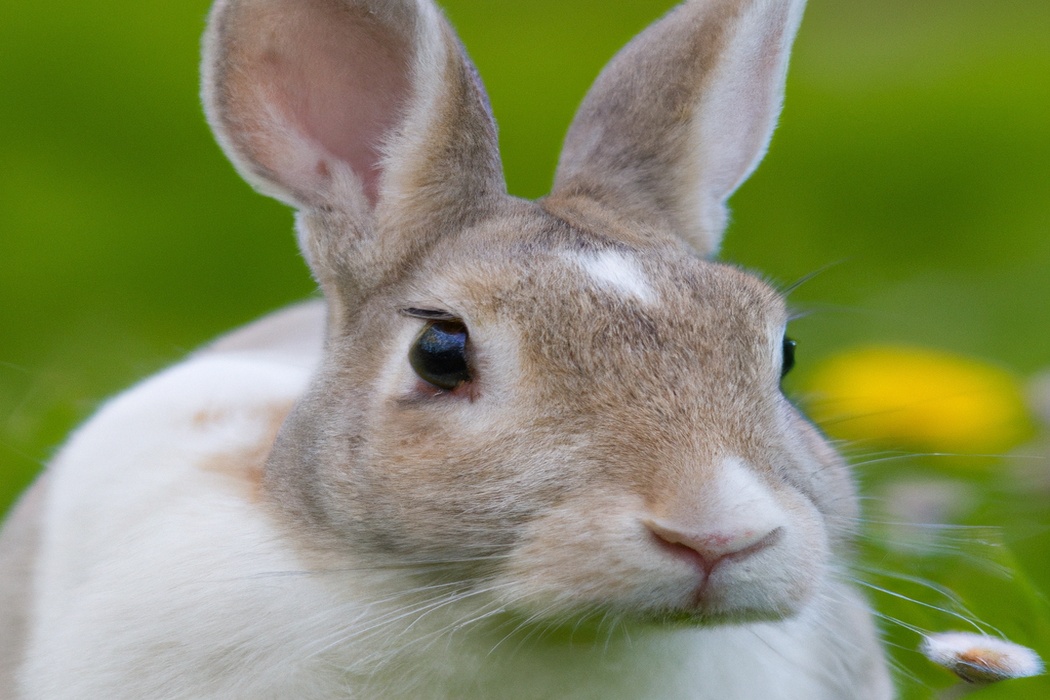
Managing Exercise and Playtime for Rabbits and Dogs
To ensure a healthy and happy bond between your rabbit and dog, it’s important to manage their exercise and playtime. Here are a few tips:
- Schedule separate play sessions: Dogs and rabbits have different exercise needs, so it’s best to provide dedicated playtime for each. Keep small animals like rabbits in a secure area, and use toys to engage them mentally.
- Supervise interactions: When the dog and rabbit are together, closely supervise their interactions to prevent any potential accidents or harm. It’s crucial to prioritize everyone’s safety.
- Provide mental stimulation: Both rabbits and dogs need mental stimulation. Incorporate puzzle toys, treat-dispensing toys, and interactive games to keep them entertained and mentally engaged.
- Offer plenty of exercise options: Dogs require more physical exercise than rabbits. Take your dog for walks, play fetch, or engage in other active games. Rabbits can benefit from supervised free-roaming time in a safe, enclosed area.
Remember, it’s important to prioritize the safety and well-being of both your rabbit and dog. By providing individualized exercise and playtime, you can ensure they both get the physical and mental stimulation they need while strengthening their bond.
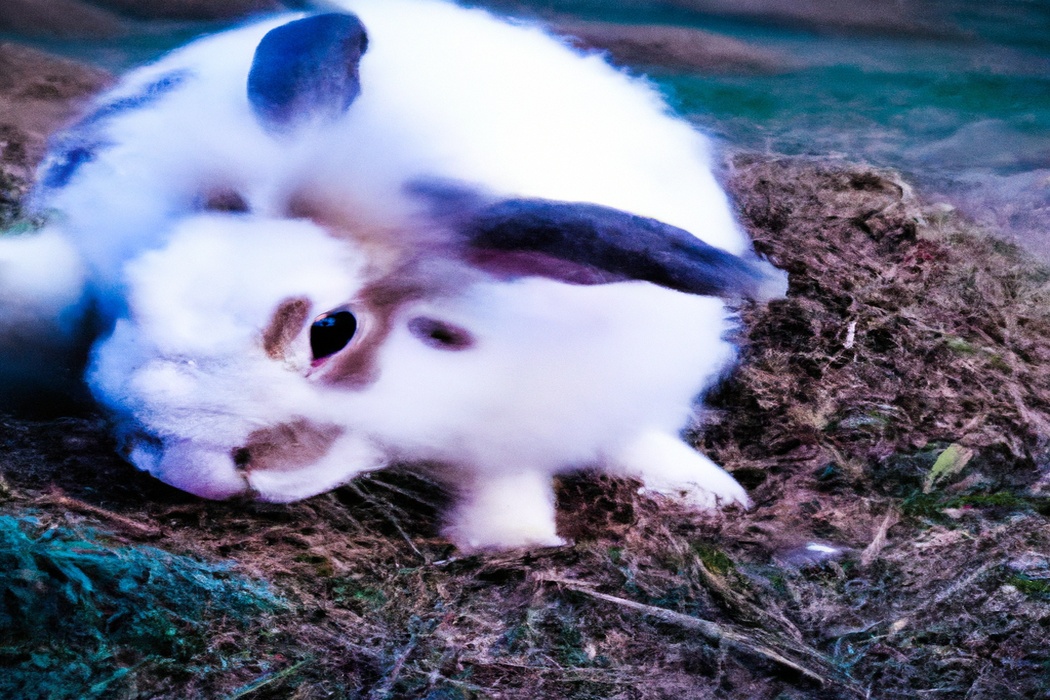
Providing Appropriate Nutrition for Rabbits and Dogs
When it comes to providing appropriate nutrition for rabbits and dogs, a balanced diet is key. For rabbits, a diet high in fiber, like hay and leafy greens, is essential for their digestive health.
They also require a small amount of pellets and fresh vegetables.
Dogs, on the other hand, need a diet that consists of high-quality protein, such as meat, and a mix of carbohydrates and fats. It’s important to consult with a veterinarian to ensure you’re meeting your pets’ specific nutritional needs.
Remember to always provide fresh water and monitor their weight to maintain their overall health.
Handling Potential Issues in the Rabbit and Dog Relationship
When it comes to handling potential issues in the rabbit and dog relationship, it’s important to prioritize safety and establish clear boundaries. Here are some tips to navigate potential challenges:
- Supervision: Always supervise interactions between your rabbit and dog to prevent any harmful behavior.
- Introduction: Introduce them gradually and in a controlled environment to promote positive associations.
- Training: Train your dog to respond to commands, such as “leave it” or “stay,” to ensure they respect the rabbit’s space.
- Separate spaces: Provide separate areas for your rabbit and dog to retreat to if they need some alone time or feel overwhelmed.
- Respect: Teach children and visitors to respect the relationship between the two animals and avoid any teasing or rough play.
- Enrichment: Offer mental and physical stimulation to both animals to prevent boredom and reduce the likelihood of behavioral issues.
- Professional advice: Consult with a veterinarian or animal behaviorist if you encounter any ongoing challenges or concerns.
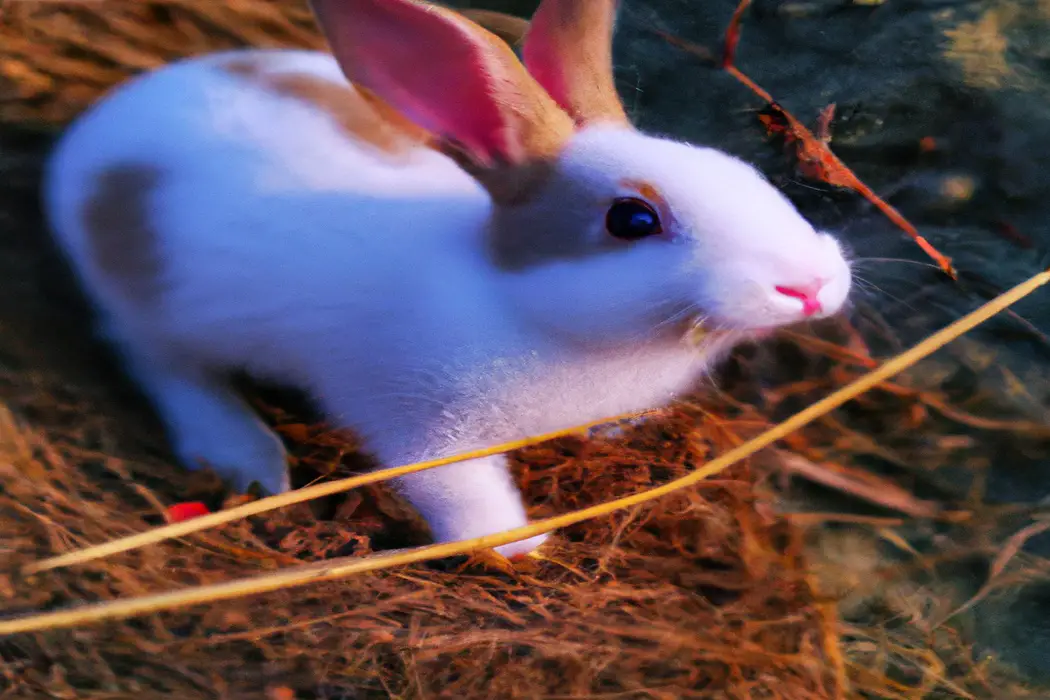
Seeking Professional Guidance for a Successful Rabbit and Dog Bond
If you want a successful bond between your rabbit and dog, seeking professional guidance is a smart move. A professional can offer valuable advice on introducing the two animals, ensure their safety and well-being, and address any concerns or behavior issues that may arise.
They can also provide guidance on proper socialization, training, and ongoing care to promote a positive and harmonious relationship.
Remember, a little professional help can go a long way in fostering a successful bond between your rabbit and dog.
A Symbiotic Relationship Between a Rabbit and Children
Children and rabbits can form a symbiotic relationship that promotes mutual learning, companionship, and responsibility.
Teaching Children About Responsible Pet Ownership
Teaching children about responsible pet ownership is important for their development and the well-being of the animals.
Here are some tips to help you in this process:
- Educate them on the needs of the pet: Teach them about the proper diet, exercise, grooming, and medical care required for the specific pet they have.
- Involve them in the care routine: Encourage children to take an active role in feeding, cleaning, and playing with the pet.
- Teach empathy and kindness: Explain the importance of being gentle, patient, and understanding towards animals.
- Set rules and boundaries: Establish guidelines for handling the pet, such as not pulling on their fur or tail, and ensuring they have a safe space.
- Encourage responsible decision-making: Help children understand the long-term commitment that comes with owning a pet and involve them in decision-making processes, such as adopting or purchasing.
- Lead by example: Show your child responsible pet ownership by demonstrating proper care and respect for animals.
- Communicate the importance of responsible ownership: Discuss the consequences of neglecting a pet’s needs and the impact it can have on their well-being.
By teaching children about responsible pet ownership, we can foster a lifelong love and respect for animals while ensuring the well-being of our furry friends.
Benefits of the Rabbit and Child Bond
The bond between a rabbit and a child offers numerous benefits.
- Companionship: Rabbits are social animals that enjoy spending time with humans, providing children with a constant companion.
- Emotional development: Caring for a rabbit teaches children empathy, responsibility, and compassion.
- Physical activity: Taking care of a rabbit requires daily activities like feeding, grooming, and playing, encouraging children to stay active.
- Therapeutic effects: Interacting with rabbits can have a calming effect, reducing stress and promoting emotional well-being.
- Educational opportunities: Owning a rabbit can be an educational experience, teaching children about biology, animal behavior, and the importance of empathy towards animals.
Teaching Children to Provide Proper Care for Rabbits
Teaching children to care for rabbits is an important responsibility.
Here are some key points to consider:
- Ensure proper nutrition: Teach children about a rabbit’s diet, which should include hay, fresh vegetables, and a small amount of pellets.
- Encourage regular exercise: Explain the importance of allowing rabbits to exercise daily in a safe, supervised area.
- Teach proper handling: Show children how to handle rabbits gently, supporting their hind legs to prevent injury.
- Provide a safe habitat: Teach children about the importance of a clean and spacious living environment for the rabbit, including a proper cage or hutch.
- Promote socialization: Instruct children on the importance of socializing rabbits to prevent loneliness and encourage positive interactions.
- Regular health check-ups: Teach children to identify signs of illness and schedule regular veterinary check-ups for their rabbit.
- Teach grooming habits: Explain the need for regular grooming to children, including brushing their rabbit’s fur and trimming their nails.
By teaching children these care tips, they can develop a deeper understanding and bond with their rabbit while ensuring its health and happiness.
The Role of Adult Supervision in the Rabbit and Child Relationship
Adult supervision plays a vital role in ensuring the safety and well-being of both the child and the rabbit in their relationship. The adult supervising should ensure that the child interacts with the rabbit in a gentle and appropriate manner.
They can teach the child how to handle the rabbit safely, such as supporting its body and avoiding sudden movements.
Additionally, the adult should closely monitor the interactions to prevent any accidental harm or mishandling. By providing consistent supervision, adults can create a positive and safe environment for children to develop a loving relationship with their rabbits.
Precautions to Take to Ensure the Safety of Both Rabbits and Children
To ensure the safety of both rabbits and children, there are a few precautions you can take.
- Supervision is key: Always supervise interactions between rabbits and children, especially young children who may not understand how to properly handle or approach the rabbit.
- Teach gentle handling: Teach children to be gentle and respectful when handling rabbits. They should avoid picking them up by their ears or pulling on their fur, and instead, support their body and handle them calmly.
- Educate about allergic reactions: Some children may have allergies to rabbits, so it’s important to educate them about potential allergies before introducing a rabbit into the home. Monitor any signs of allergies and seek medical attention if necessary.
- Create a safe environment: Rabbit-proof your home by keeping electrical cords out of reach and removing any toxic plants or substances that the rabbit could access.
- Separate play areas: Consider creating separate play areas for rabbits and children to ensure the safety of both. This can help prevent accidents or injuries and give each their own space to enjoy.
Remember, a little awareness and precaution can go a long way in creating a safe and harmonious environment for both rabbits and children.
Encouraging a Lifelong Love for Animals through Caring for Rabbits
Caring for rabbits can be a great way to encourage a lifelong love for animals in children.
By taking responsibility for the daily care of a rabbit, children learn about the needs and emotions of these furry creatures.
They develop empathy, compassion, and a deep understanding of the importance of providing a safe and nurturing environment.
This hands-on experience can foster a strong bond between children and animals, instilling a love and respect for all living beings.
Plus, rabbits are just so adorable!
Final Verdict
The symbiotic relationship between a rabbit and [cat/dog/children] can be a truly enriching experience for both parties involved. By creating a harmonious living environment, providing proper nutrition, promoting bonding and playtime, and ensuring regular veterinary check-ups, we can foster a strong and healthy bond between these unlikely companions.
While there may be challenges along the way, seeking professional guidance and practicing responsible pet ownership can help overcome any obstacles.
Ultimately, the bond between a rabbit and [cat/dog/children] can bring joy, companionship, and a lifelong love for animals.

